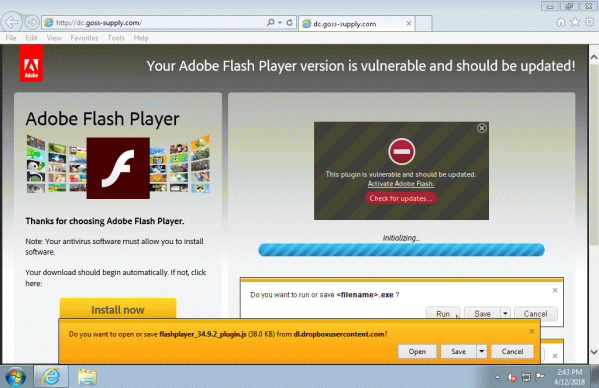Patching is important, but not everything that presents itself as a security patch is safe to install.
Malwarebytes
researcher Jérôme Segura has written a
detailed analysis
of the ‘FakeUpdates’ campaign, where thousands of websites with an out-of-date content management system have been compromised to spread malware. Rather than exploiting vulnerabilities in browsers or browser plug-ins, as is common in exploit kits, this campaign uses social engineering to trick a user into installing malware.
A visitor to such a site would be presented with a dialog urging them to update their browser or their
Flash Player
plug-in, but the update is, in fact, a script, hosted on
Dropbox
, that downloads the final payload. Jérôme mentions having seen both the
Chthonic banking trojan
and the
NetSupport RAT
being delivered; both have been used in exploit kits in the past.

A compromised site running Joomla serving a Dropbox-hosted .js file masquerading as a Flash Player update. (Thanks to Adrian Luca for the screenshot.)
Though technically not very advanced, this threat might not be picked up by many automatic analysis systems since it requires user interaction. Moreover, to further frustrate researchers, the dialog is shown only once per IP address.
One of the leading researchers in web-based malware, Jérôme will speak at VB2018 on another recent trend in web-based malware:
drive-by cryptocurrency miners
. VB2018 takes place in Montreal, Canada 3-5 October this autumn. The
programme
was published last week; registration will open soon.
Leave a Reply